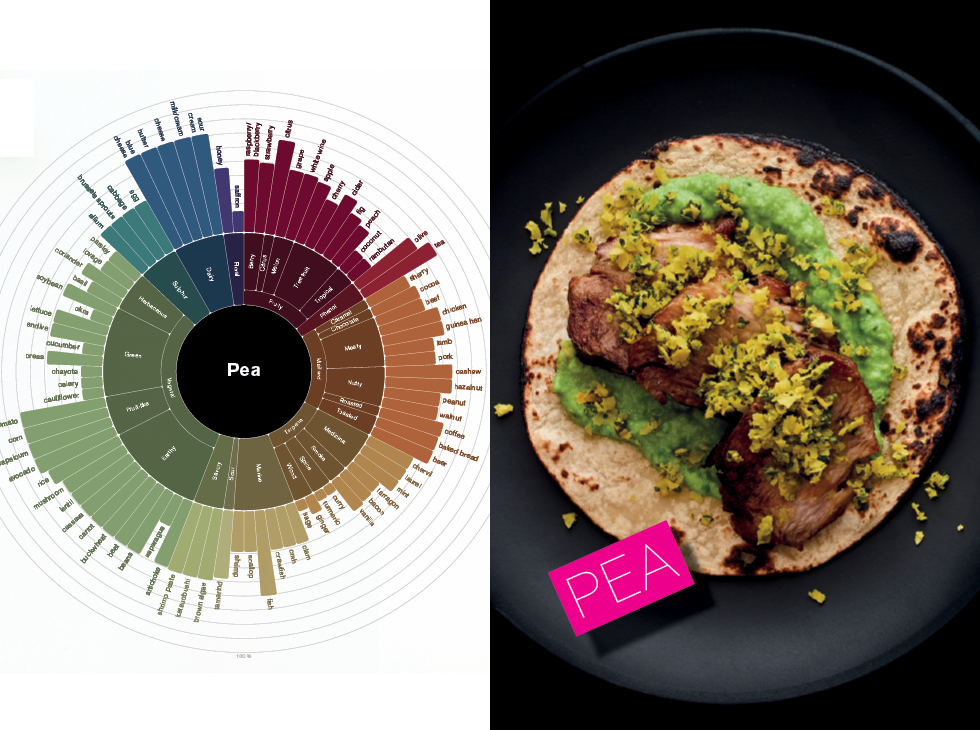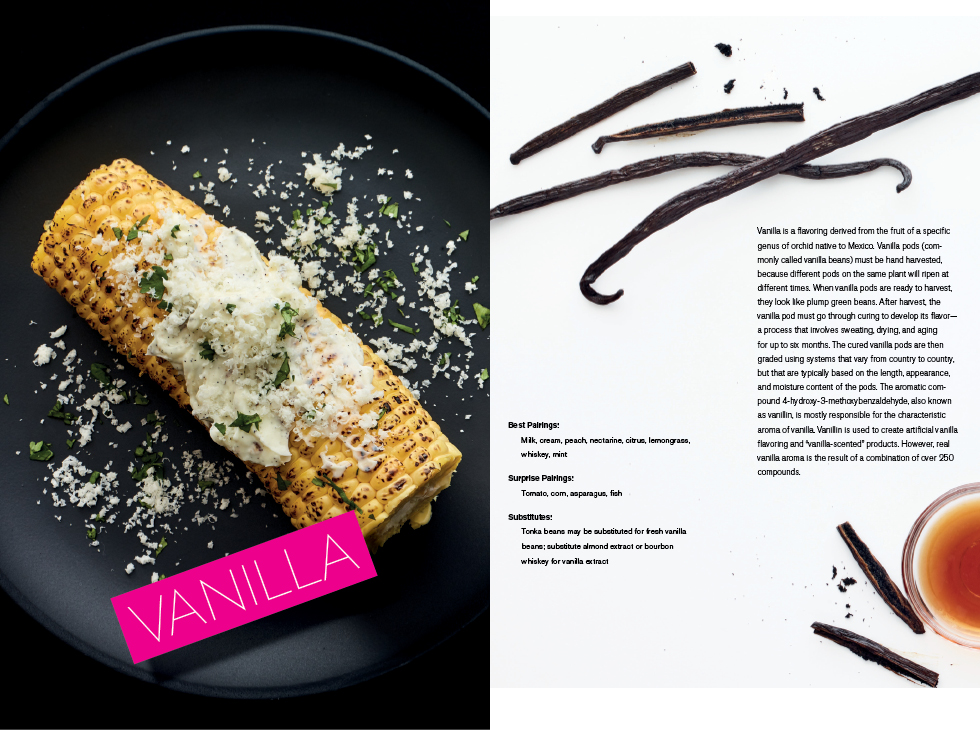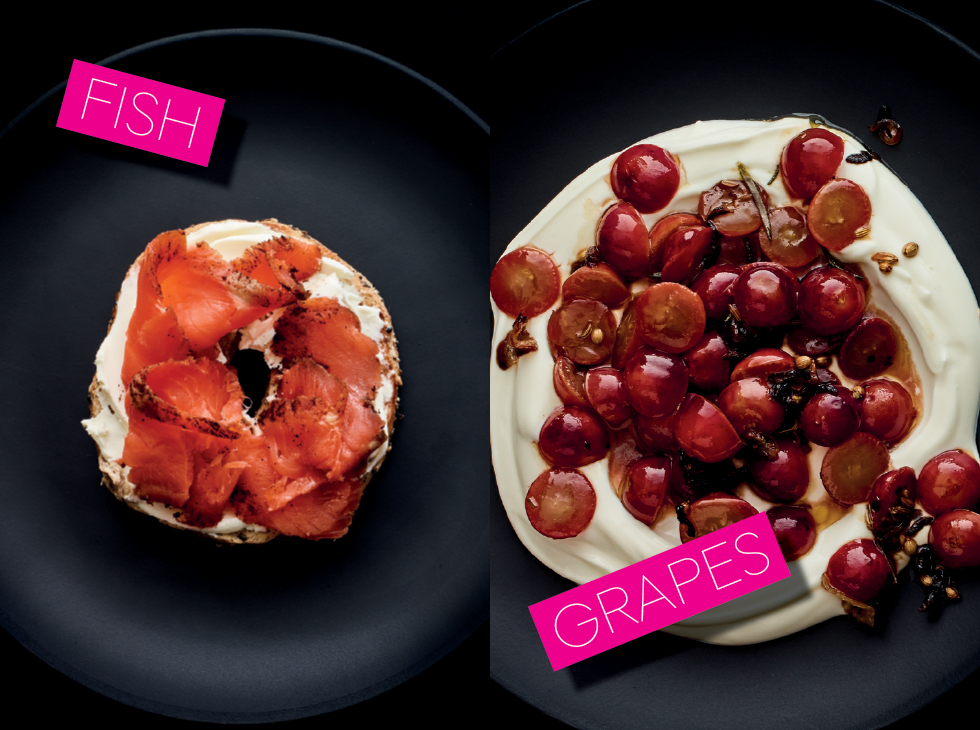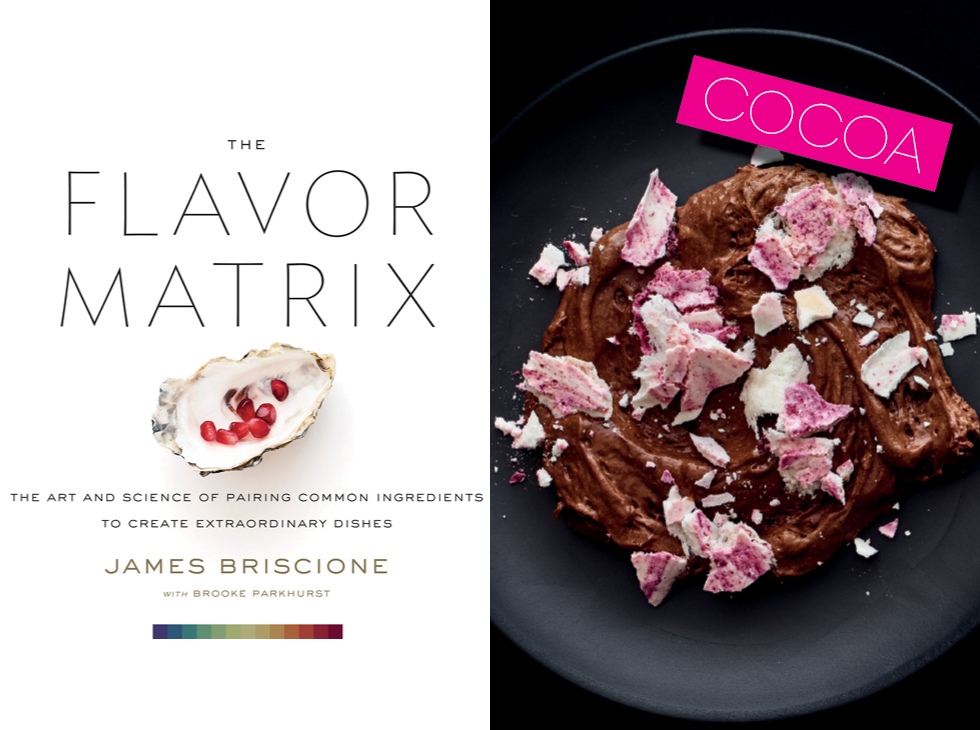This book ventures beyond convention. Instead of relying on already established complementary food pairs, this process uses the chemistry of shared molecular structures as its basis. That is, the aromatic fingerprints of each item are compared scientifically—and where they overlap, is where they complement each other. By proceeding with this method, unexpected and unusal results come to life.
The science behind food pairing started as an inspiration from James Briscioine, an instructor at ICE who interacted with Watson, IBM’s famous computer. Since then, food scientists have taught chefs that ingredients contain a complex network of chemical structures called volatile compounds. These compounds give each food its own unique flavor.
Starting with the six basic tastes: salty, sweet, sour, bitter, umami, and fat, we perceive each of these tastes via chemical reactions that take place on the tongue, mouth, and throat when we consume food. According to the book, these tastes comprise only 20 percent of what we perceive as flavor—the other 80 percent is experienced through the nose via aromatic compounds.
The book takes 58 basic foods and zeroes in on each one’s tasting profile. Each food then lists the best pairings, some surprise pairings, and how to substitute each food. A recipe most unusual demonstrates one of the pairing ideas to get you started. The book contains charts galore that beautifully spell out the options, and provide ideas for future experimentation.

PEA: Sweet Pea, Pork, and Coconut Tacos recipe with accompanying pairing chart.

VANILLA: The recipe for Vanilla Butter, shown on corn, with vanilla’s tasting profile.

More unusual recipes: FISH: A Coffee-Cured Salmon sits on a bagel, left. GRAPE: Spice-Roasted Grapes turn something sweet into something more savory.
The book ends with more analysis of flavors, textures, tastes, and aromas that encompass the eating experience. I particularly liked the section on Aromas, which describe and list everything from Fruity to Maillard (found in baked bread, roasted meat, and chocolate).
Check out this recipe from the book for an attractive and unusual pairing of chocolate and beets. (photo at the top of this post.)
recipe
CHOCOLATE MOUSSE WITH CRISP BEET MERINGUE
This recipe delivers unexpected flavors atop a familiar foundation. There is nothing more comforting than a creamy bowl of chocolate mousse. Beets, camomile, and orange zest punch up the flavor of that classic dish, while the beet meringue adds crunch and makes for a dramatic presentation.
SERVES 6
BEET MERINGUE
3 large egg whites
Pinch of cream of tartar (optional)
1/3 cup granulated sugar
3/4 cup powdered sugar
3/4 cup roasted beet purée (or 1 cup peeled and chopped beets, boiled until very soft, peeled, and puréed in a food processor or blender until smooth)
CHOCOLATE MOUSSE
3/4 cup heavy cream
Grated zest of 1 orange (about 1 1/2 tablespoons)
1 tablespoon dried camomile flowers (optional)
8 ounce semisweet chocolate (at least 70% cacao), chopped
1 tablespoon unsalted butter, softened
6 large egg whites
2 tablespoons granulated sugar
Make the beet meringue: Preheat the oven to 150 to 200°F. Line a 13 by 9-inch baking pan with a silicone baking mat or parchment paper and coat with nonstick cooking spray.
Whip the egg whites and cream of tartar (if using) with an electric mixer until frothy. Gradually add the granulated sugar and continue whipping until stiff peaks form and the whites are smooth and glossy. Sift the powdered sugar over the meringue, then gently fold it in.
Place dollops of meringue all over the baking pan. Measure out 1/2 cup of the beet purée; set aside the remaining 1/4 cup for the mousse. Drop spoonfuls of the beet purée in between dollops of meringue, then gently swirl with a spatula and smooth into a thin layer. Bake for about 6 hours at 150°F or 3 hours at 200°F, until crisp but not browned. Remove from the oven and let cool to room temperature. Break into pieces and store in an airtight container in a cool, dry place.
Make the mousse: Combine the cream, orange zest, and camomile (if using) in a small sauce pot and bring to a boil over medium heat. Turn off the heat, cover the pot, and let steep for 10 minutes.
Combine the chocolate and butter in a heatproof bowl. Strain the cream through a fine- mesh sieve into the chocolate and let stand for 3 minutes. Whisk until all the chocolate has melted and the mixture is smooth. Stir in the reserved beet purée.
Using an electric mixer, whip the egg whites to soft peaks. Gradually add the granulated sugar and continue whipping until stiff peaks form. Gently fold the whipped egg whites into the chocolate mixture one- third at a time until fully incorporated. Refrigerate until well chilled.
When you’re ready to serve, divide the mousse among six bowls and top each with pieces of beet meringue.
Excerpted from THE FLAVOR MATRIX © 2018 by James Briscione with Brooke Parkhurst. Photography © 2018 by Andrew Purcell. Reproduced by permission of Houghton Mifflin Harcourt. All rights reserved.


